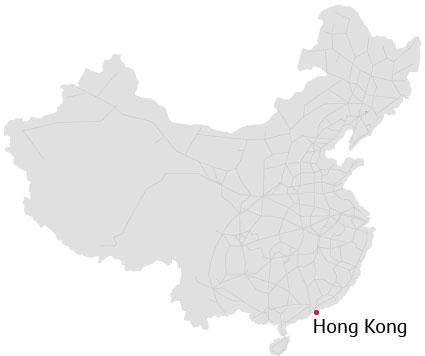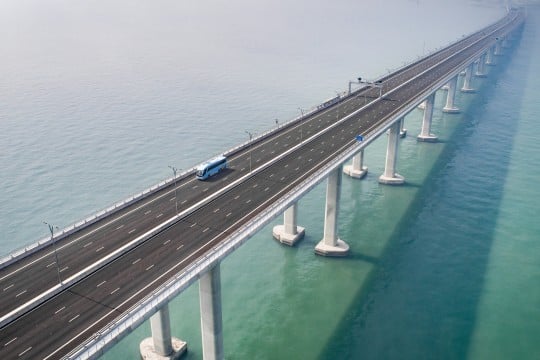Chapter 1
Everything you need to know about the high-speed rail
Running from West Kowloon to Shenzhen and Guangzhou, the new rail link offers a super-fast connection between Hong Kong and multiple destinations on the Mainland.
Hong Kong’s long-awaited high-speed rail may become the new popular mode of transport to and from the Mainland, thanks to its speed and the advanced technology it employs. Here’s your guide to the facts, the science, and to using the high-speed rail.
On the move: travel numbers on the rise
The relationship between mainland China and Hong Kong is growing day by day. If we look at the passenger arrivals from one of Hong Kong’s border points, Lok Ma Chau Terminal, the number of passengers going through this border crossing experienced a nine-fold increase from 2000 to 2017. Lok Ma Chau is only one of many border crossing points between mainland China and Hong Kong.
Arrivals & Departures
What is the high-speed rail?
Commencing operation on September 23, 2018, this new, 26-km high-speed train links Hong Kong West Kowloon Station to Shenzhen. The high-speed rail runs underground through dedicated tunnels, passing under Yau Tsim Mong, Sham Shui Po, Kwai Tsing, Tsuen Wan and Yuen Long.
The highly punctual new high-speed rail is largely unaffected by weather or traffic conditions. This, plus the innovations applied to both the trains and their tracks, make it the fastest option for land-based, cross-border transport between Hong Kong and the Mainland.
It also connects directly with China’s 25,000-km, high-speed rail network in Shenzhen, linking the SAR with six short-haul destinations in the Guangzhou-Shenzhen section, and a total of 44 stations in mainland China, including Beijing, Shanghai, Harbin, Kunming and Urumqi. Combined, the Hong Kong and China rail links form the largest high-speed rail network in the world.
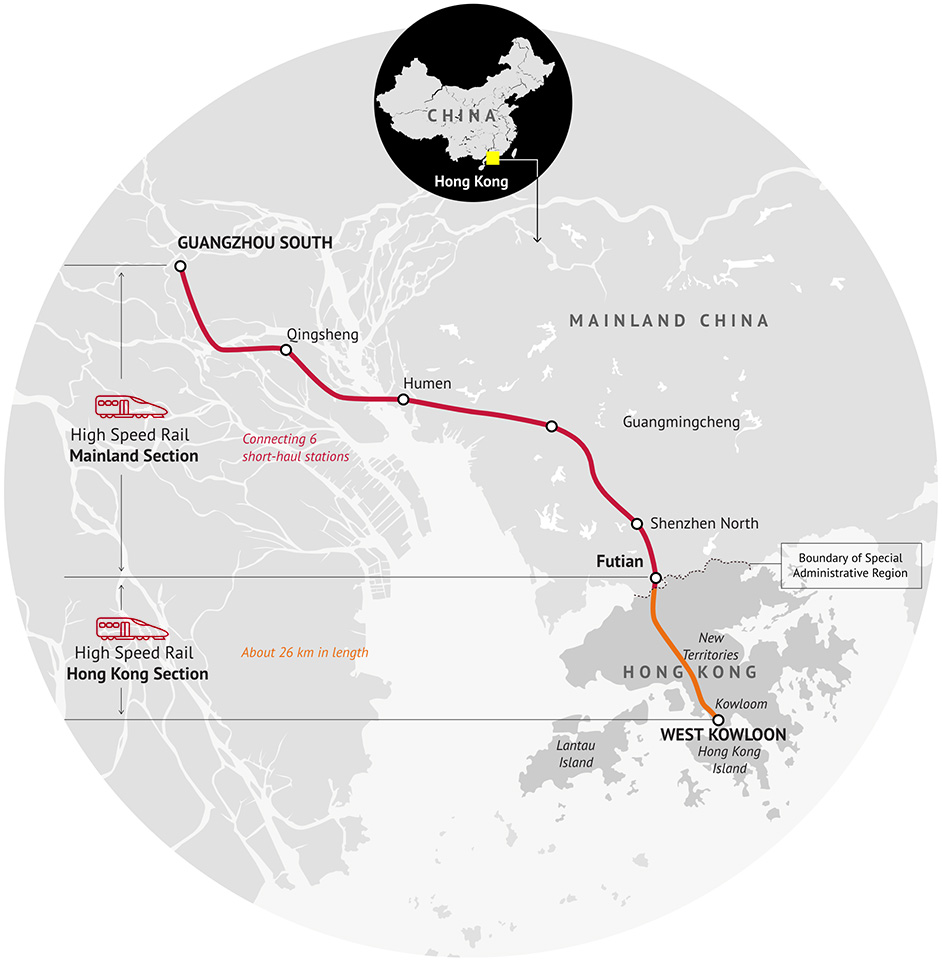
Who’s behind the high-speed rail?
The Hong Kong government funded the Hong Kong portion of the high-speed underground rail link. The MTR Corporation, meanwhile, took responsibility for planning and constructing Hong Kong’s high-speed rail, and it is also in charge of operating this section of the rail link.
So how fast does it go?
Travelling at 200km/h, the high-speed rail takes just 48 minutes to go from Hong Kong West Kowloon Station to Guangzhou – a huge improvement on the two hours passengers spend travelling by MTR Intercity Through Train to Guangzhou.
The high-speed rail (200km/h)

MTR Intercity Through Train to Guangzhou

The Journey from Hong Kong to Mainland
NOW
Starting your journey at Hong Kong
West Kowloon Station
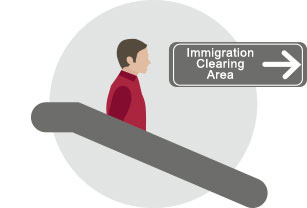
Passengers get their tickets checked and, after going through security, they take an escalator to the Departure Concourse, where they can clear Hong Kong immigration.

Travellers then clear Chinese immigration, saving them the hassle of clearing it when they get to China.

Once cleared for entry into mainland China, passengers can choose to remain in the waiting area, or take an escalator or lift to the train platform.

Boarding the high-speed rail, passengers will reach Shenzhen North in just 23 minutes. From here, they can connect with China’s national railway network, accessing multiple destinations all over the Mainland.
THEN
Starting your journey
at Hong Kong Lok Ma Chau Station

This route is one of many MTR and bus routes to the Mainland. It takes passengers from Hung Hom station to Lok Ma Chau station via the MTR’s East Rail Line.

At immigration in Lok Ma Chau, Hong Kong residents can use their HKID cards to go through the e-channels to exit Hong Kong.

Travellers then walk across a footbridge to go through Chinese customs and immigration before entering Shenzhen, an established port of entry to the People’s Republic of China.

After clearing immigration on the Mainland side, passengers can travel to other parts of Shenzhen via the Shenzhen Metro, and from there, to the rest of China.
Travel times
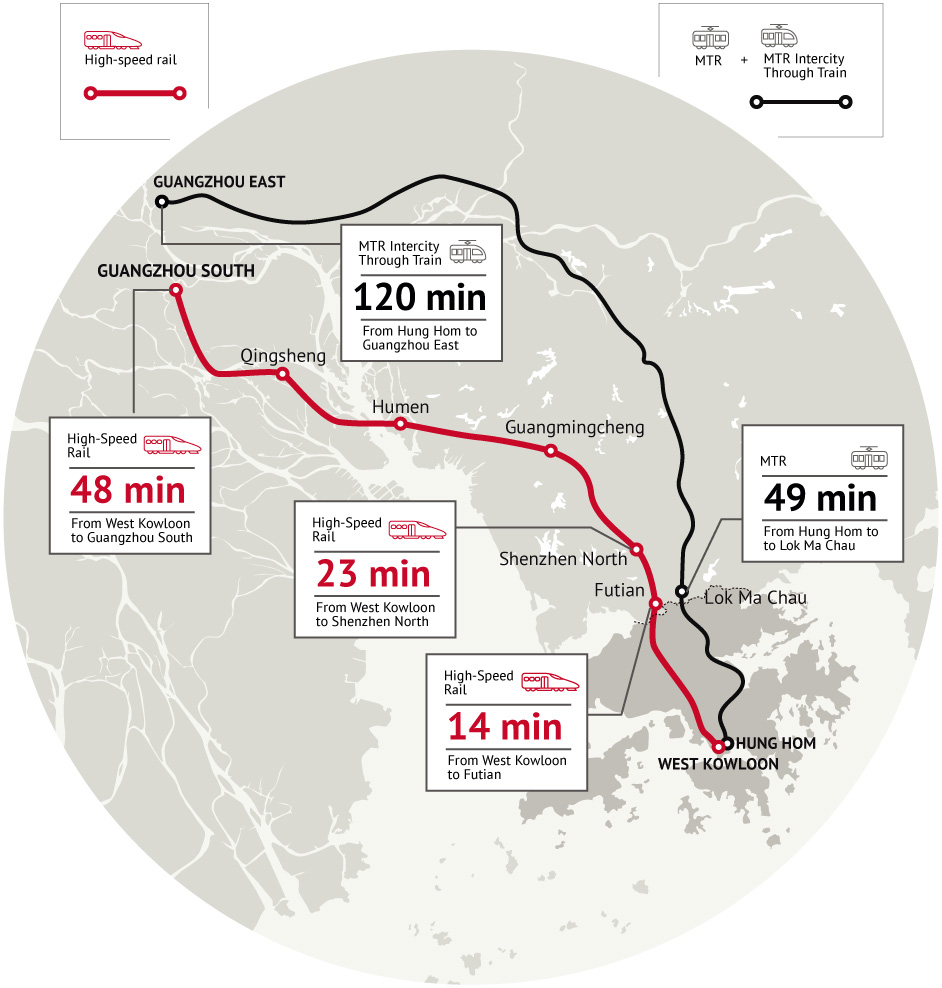
Destinations: where can I go and how long will it take?

